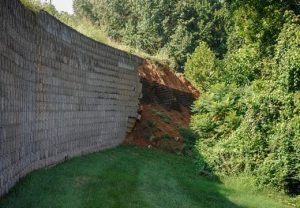 Imagine noticing a prominent bulge in the once straight facade of a Mechanically Reinforced Earth (MSE) wall.
Imagine noticing a prominent bulge in the once straight facade of a Mechanically Reinforced Earth (MSE) wall.
It's a clear sign of distress. The geosynthetic reinforcement elements, tasked with reinforcing the earth and keeping the wall blocks in place, are yielding to lateral pressures. Without intervention, the wall's stability is in jeopardy—you know that realigning and reinforcing this retaining structure is imperative, employing expert techniques to restore its designed strength and durability.
Retaining wall repairs are essential for maintaining the structural integrity and functionality of these important structures. Whether it's an MSE wall, gabion wall, or historic rock wall, timely repairs are crucial to prevent further damage and potential failure. Here are some key points to consider when it comes to retaining wall repairs:
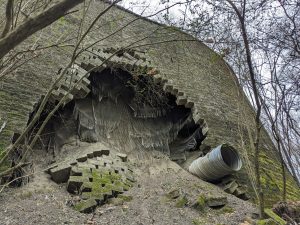 Before rehabilitation can begin, a comprehensive evaluation of the retaining wall’s condition is pivotal. This inspection scrutinizes visible deformations, such as bulges or tilting, as well as less apparent issues like undermining or water infiltration. Identifying the root cause of distress is key; it may stem from poor drainage, inadequate reinforcement, or even substandard materials. Geotechnical engineers must assess the extent of the damage, drawing from an array of investigative techniques to inform the most effective repair strategy.
Before rehabilitation can begin, a comprehensive evaluation of the retaining wall’s condition is pivotal. This inspection scrutinizes visible deformations, such as bulges or tilting, as well as less apparent issues like undermining or water infiltration. Identifying the root cause of distress is key; it may stem from poor drainage, inadequate reinforcement, or even substandard materials. Geotechnical engineers must assess the extent of the damage, drawing from an array of investigative techniques to inform the most effective repair strategy.
These types of retaining wall deterioration often manifest as bowing or bulging, clear indicators of stress and displacement within the structure. These signs warrant prompt assessment and remediation steps.
Distinct cracking patterns may signal reinforcing element distress or soil pressure imbalances. Wall movement or rotation usually exacerbates such faults, necessitating meticulous investigation.
MSE walls often fail due to inadequate drainage, clogged drainage systems, inadequate connection of the geogrid to the block facing, and other construction defects.
Geotechnical engineers must discern subtle signs like efflorescence or weep hole blockages, which can denote deleterious water issues. Addressing these early can prevent more extensive wall damage and costly repairs.
Early detection of retaining wall issues ensures timely repairs, averting further degradation and possible structural failure. Ignoring minor anomalies may precipitate significant, more costly damages.
Minor displacements can quickly escalate into major failures if not addressed. This is especially true in areas with expansive soils that are subject to expanding when wet and shrinking when dry, and/or areas subject to frost heave. Regular monitoring of these systems is essential.
Proactive inspection regimes are critical for identifying early onset of failure mechanisms. Such regimes enable interventions that can arrest or reverse damage progression before it evolves to a critical state.
Implementing comprehensive evaluation protocols at the outset can isolate emerging threats. This anticipatory approach not only safeguards against abrupt wall collapse, but also optimizes financial outlay by precluding the need for extensive restorative undertakings. In geotechnical engineering, this preemptive strategy is deemed "best practice" for preserving structural integrity and extending the lifespan of retaining wall systems.
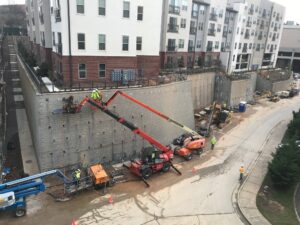
MSE wall failures often stem from inadequate drainage or suboptimal reinforcement detailing. Ensuring functionality often requires comprehensive retrofitting measures addressing these weaknesses.
To arrest further deterioration, targeted remediation strategies may involve installing additional drainage systems or implementing reinforced earth straps to restore structural stability. Accurate placement and compaction of backfill material are critical to the success of these interventions.
Our approach embraces a culture of proactive maintenance, integrating monitoring and timely upgrades to extend the lifespan of MSE walls.
Effective restoration of reinforcement systems requires a meticulous deconstruction and assessment of the existing system's integrity and stability.
Reinforcement components may need replacement with materials offering improved durability and strength.
Restoration may also include updating the reinforcement system with current geotechnical engineering advancements for heightened resilience.
The integrity of retaining walls is critically dependent on effective drainage to prevent hydrostatic pressure build-up.
Neglecting proper drainage can lead to catastrophic wall failures, demanding rigorous attention to drainage design and execution.
Regular inspection and maintenance of drainage components are essential to identify and rectify any issues compromising wall stability.
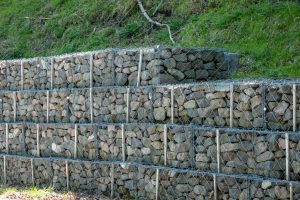 When conducting gabion wall inspections, look for any signs of wire mesh deterioration, such as rusting or breakage. This weakening of the gabion's structure, if ignored, can lead to contents spilling out and subsequent wall failure.
When conducting gabion wall inspections, look for any signs of wire mesh deterioration, such as rusting or breakage. This weakening of the gabion's structure, if ignored, can lead to contents spilling out and subsequent wall failure.
In the event of minor damage, it’s feasible to undertake a localized repair by restitching the mesh using galvanized wire or by adding additional rock-fill to restore integrity. For more extensive damage, however, sections of the gabion may need to be dismantled and reconstructed. It is critical that any repair work maintains the continuity of the structure to prevent further degradation.
Restoration begins with a thorough assessment of the prevailing conditions affecting the wall's stability.
Implementing geosynthetic reinforcements can remediate shear stress and enhance soil retention, stabilizing the structure significantly.
Precision in restoration is crucial; matching backfill materials and compaction levels ensures uniformity and resistance to future deformation.
Engineered solutions, such as Geosynthetic Confined Soil (GCS®) technology, offer state-of-the-art confinement, shifting failure modes to substantially strengthen walls.
Diligent maintenance routines are indispensable for preserving the reinforced wall's structural integrity long-term.
Maintaining wall permeability, minimizing surface drainage discharge onto the wall face, and keeping subdrainage systems open is essential for wall longevity.
For structures like gabion walls, permeability is a cornerstone characteristic, fundamental to their effectiveness as retaining solutions. Without proper permeability, water can accumulate behind the wall, leading to increased hydrostatic pressure and potential wall failure. Therefore, it is imperative to ensure that the fill material allows for adequate water drainage while preserving wall flexibility to adapt to ground movements.
Routine checks are critical to sustain wall flexibility.
Inspections should focus not only on the integrity of the fill material but also on the condition of the geotextile and mesh components. Flexibility allows these structures to conform to soil shifts without compromising their structural capacity, so ensuring the materials maintain their pliability is necessary to foster long-term viability.
Regular maintenance upholds the required permeability and flexibility.
Appropriate actions may include cleaning out wall drainage systems to prevent blockages and clogging. Ongoing assessment and rehabilitation work, conforming to the highest industry standards formulated in 2023 and beyond, are paramount to prevent the common causes of failure in retaining structures that rely heavily on their permeable and flexible properties.
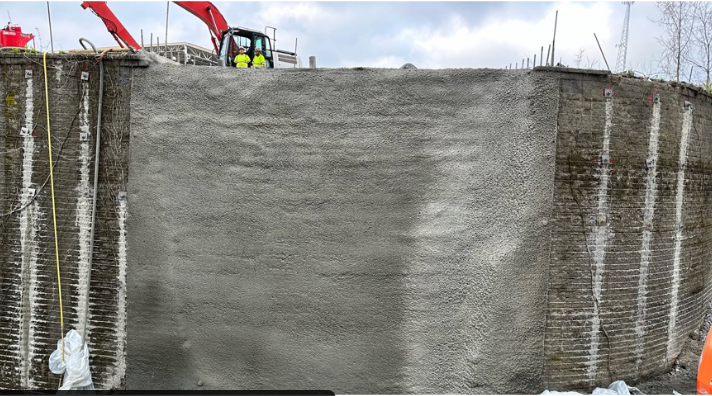
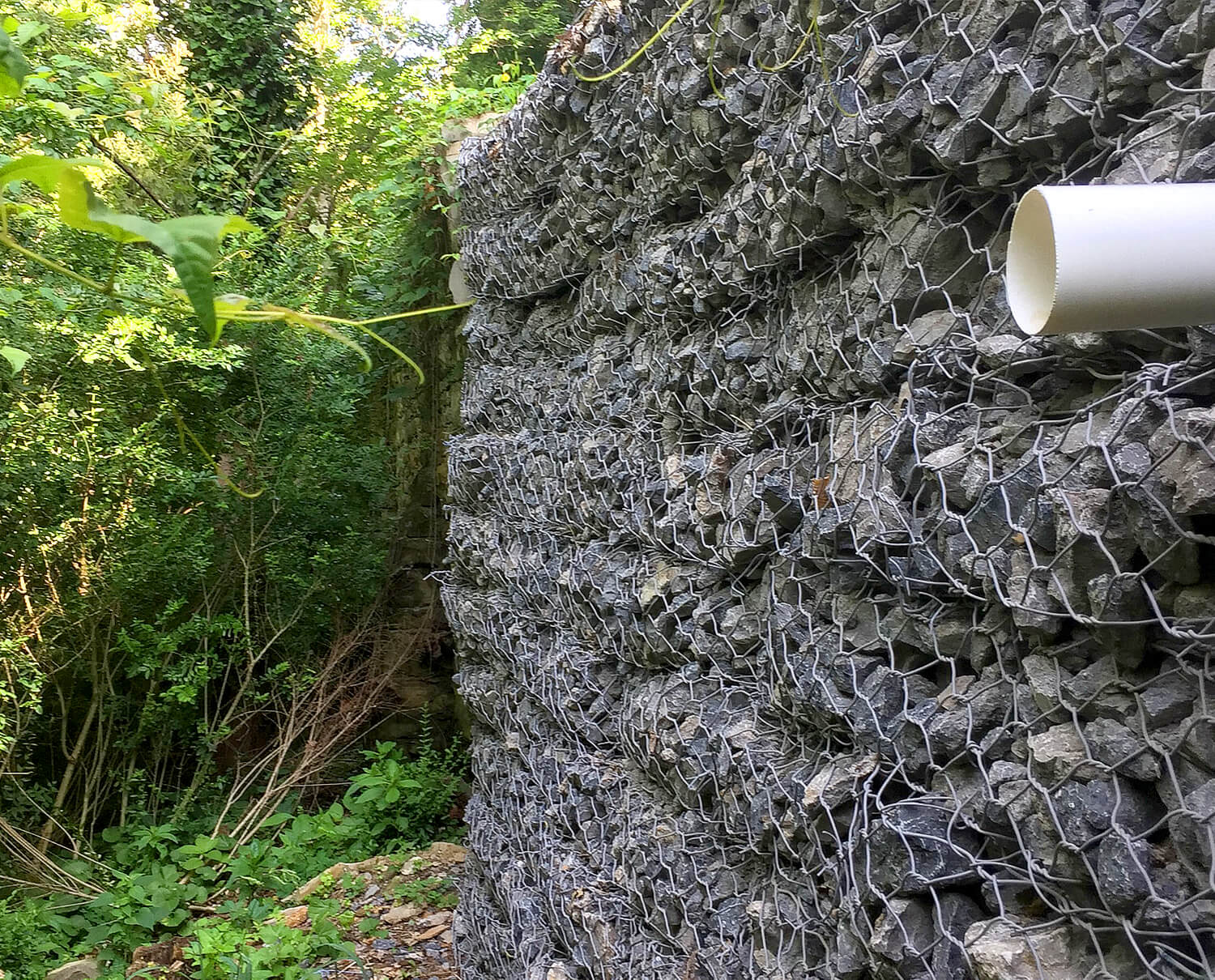
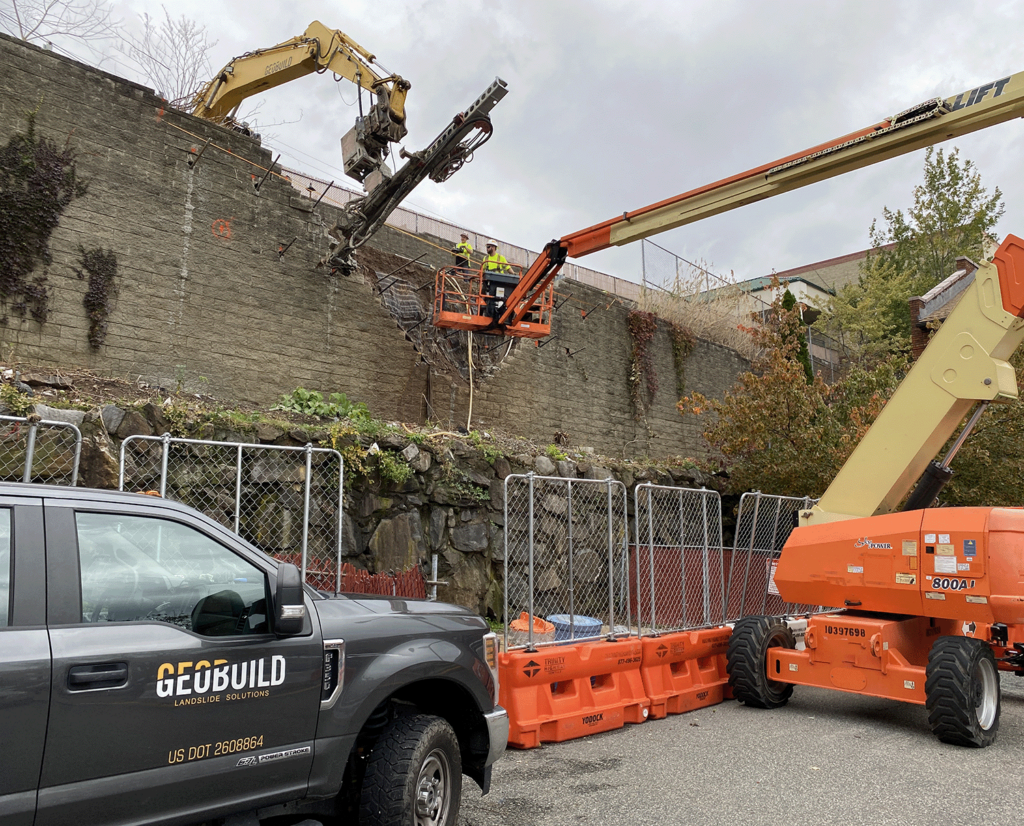
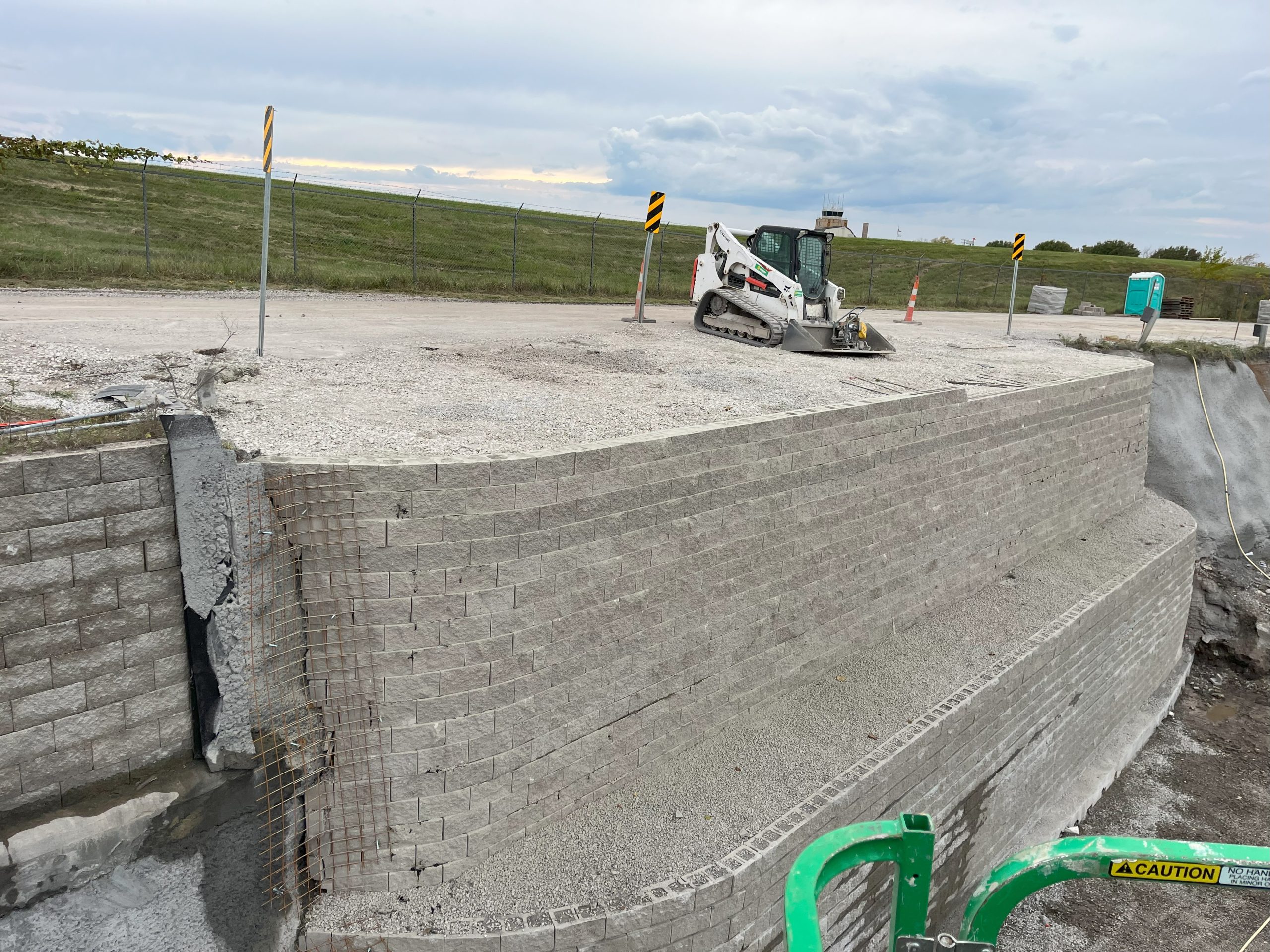
Historic rock walls are testimony to enduring artisanal skill and natural resilience. Their preservation demands a symbiosis of respect for the past and contemporary engineering insight.
Amidst the discourse on rehabilitation, an informed balance between maintaining historic authenticity and ensuring structural adequacy is often challenging. Our approach embraces both by utilizing period-appropriate techniques amplified by modern stabilization principles.
Ultimately, the goal is to extend the life of these venerable structures without obscuring their storied stonemasonry. Each project is a delicate negotiation between reverence for history and the imperatives of safety.
Historic rock walls not only embody craftsmanship but also tell stories of the time they were erected. Matching their intricate patterns requires an astute understanding of historical masonry techniques.
When restoring these structures, our specialists engage in a meticulous study of the existing wall, identifying distinctive features and patterns that define its character. This ensures replication not merely in form but in essence, honoring the craftsmanship that has withstood the test of time. We incorporate traditional methods, often sourcing original materials, to preserve the wall's historical authenticity while employing modern stabilization practices for longevity.
It is imperative that our interventions remain sympathetic to the original design. Therefore, we employ artisans who possess the skills to not only understand but recreate the unique structural nuances of these legacy walls. Their ability to discern and emulate the original mason's workmanship is crucial for a seamless restoration.
The result is a harmony between old and new, where the restored section blends indistinguishably with the historic fabric. This careful integration maintains the continuity of the wall's narrative, ensuring that the restoration contributes to the legacy rather than detracts from it. With meticulous craftsmanship and a commitment to authenticity, we achieve a resilient structure that honors its heritage.
Collaboration with historical societies is essential when addressing repairs of historic rock walls. Their insights help ensure that the restoration work maintains the wall's historical integrity.
Historical societies provide valuable context and documentation that guide our restoration process. They help with accurate historical replication, crucial for authenticity.
By working in tandem with historical societies, we can access historical records and expert opinions, ensuring the restored walls faithfully reflect the original masonry techniques. This collaboration enables us to preserve the wall’s character, cultural significance, and aesthetic value.
Our engagement with historical societies allows us to borrow from the past as we apply contemporary techniques. This ensures the restored walls withstand future stresses while maintaining their historic appearance. We jointly develop restoration plans that balance structural integrity with historical preservation, creating a legacy for future generations.
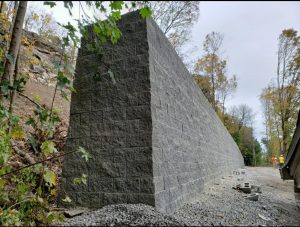 The GCS® wall system represents a paradigm shift in earth retention strategies, underlined by the innovative utilization of closely spaced inclusions to confine soil particles. This method diverts the conventional load-bearing mechanisms towards enhanced shear resistance within the soil matrix, offering a substantially fortified structure. By integrating meticulous compaction protocols and geosynthetic reinforcement, GCS® wall technology delivers unparalleled stability and durability. The result is a retaining wall solution adept at contending with the extensive lateral loads and environmental variables that can compromise lesser systems, ensuring long-term performance and reliability.
The GCS® wall system represents a paradigm shift in earth retention strategies, underlined by the innovative utilization of closely spaced inclusions to confine soil particles. This method diverts the conventional load-bearing mechanisms towards enhanced shear resistance within the soil matrix, offering a substantially fortified structure. By integrating meticulous compaction protocols and geosynthetic reinforcement, GCS® wall technology delivers unparalleled stability and durability. The result is a retaining wall solution adept at contending with the extensive lateral loads and environmental variables that can compromise lesser systems, ensuring long-term performance and reliability.
Particle confinement in GCS® walls prioritizes shear strength over tensile capacity in resisting earth pressures. This shift can dramatically increase wall stability, averting load-borne failures.
Granular soil particles, if unconfined, are susceptible to dilation and subsequent shear failure. Confinement preserves the integrity of the GCS® structure.
In the domain of earth retention, particle confinement within GCS® walls utilizes restraint, not mere reliance on tensile strength, to stabilize soil, strategically mitigating potential shear failure throughout the wall's lifespan.
Accurate confinement creates a mutually supportive matrix of particles in GCS® technology, enhancing overall stability. This bespoke approach introduces a non-reliant mechanism upon tensile strength, shifting focus to the interlocking of granular soil which, when confined, forms a robust structure able to bear extreme loads without the dilation that predicates failure.
Compaction of the soil layers within GCS® walls is paramount, serving as the cornerstone that ensures granular soil confinement, thereby facilitating load distribution and structural resilience. Without rigorous compaction, the GCS® system's effectiveness is compromised, increasing the potential for shear failure and structural instability.
The repercussions of poor compaction are most pronounced under load conditions where dilation is likely to occur. Ensuring the close spacing of inclusions is only part of the equation; proper compaction is crucial.
A well-compacted GCS® wall optimizes the confinement of soil particles, enhancing the transfer of loads through the system, instead of individual particle dilation. This uniformity is essential for maintaining stability under varying loads and preventing deformation or bulging.
Reliable compaction techniques are crucial for achieving the high level of soil confinement GCS® walls require. It strengthens the cohesion between particles, preventing the structure from succumbing to the lateral earth pressures it is designed to resist.
Compaction must be meticulously executed to maximize the effectiveness of GCS® walls. Each layer should reach the specified density to ensure proper confinement and load distribution, which are critical for the wall's longevity and integrity.
Ultimately, the compaction process is vital to the structural performance of GCS® walls. It ensures that the soil behaves as a unified mass, able to distribute loads uniformly and resist the forces exerted against it.
Repairing retaining walls is crucial for maintaining their structural integrity and functionality, whether it's an MSE wall, gabion wall, sheet pile wall, or historic rock wall. Timely repairs are essential to prevent further damage and potential failure. By identifying the root cause of damage, engaging expertise, assessing the extent of damage, choosing the right repair method, and prioritizing safety, effective repairs can be achieved. Proactive inspection regimes and early detection of issues are critical for preventing further degradation. Geosynthetic reinforcements, restoration of reinforcement systems, and proper drainage are key for rehabilitating MSE walls and gabion walls. When it comes to historic rock walls, balancing historical authenticity and structural adequacy is crucial. Matching historic patterns and collaborating with historical societies are essential steps in the restoration process. For advanced retaining wall technology, the GCS wall system offers unparalleled stability and durability through particle confinement and meticulous compaction. By following these expert solutions and tips, retaining walls can be effectively repaired and optimized for long-term stability and reliability.